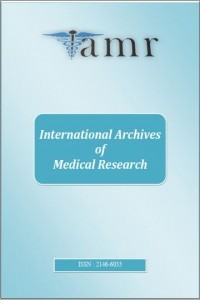Forecasting Diabetes Mellitus with Biometric Measurements
Forecasting Diabetes Mellitus with Biometric Measurements
Forecast, Diabetes Mellitüs Artificial Neural Networks (ANNs), K-Nearest Neighbor (k- NN), Support Vector Machine (SVM),
___
- World Health Organization, Media Centre, Diabetes
- Texas Heart Institute, Heart Information Center, Diabetes Mellitus
- Smith, J. W., Everhart, J. E., Dickson, W. C., Knowler, W. C. and Johannes, R. S. (1988) Using the ADAP learning algorithm to forecast the onset of diabetes mellitus. In Proceedings of the Symposium on Computer Applications in Medical Care (Washington, 1988), ed. R. A. Greenes, pp. 261–265. Los Alamitos, CA: IEEE Computer Society Press.
- Artifical Neural Networks, GIRISH KUMAR JHA, Indian Agricultural Research Inst., PUSA, New Delhi-110 012
- Frank Rosenblatt. (1958). "The Perceptron: A Probabilistic Model for Information Storage and Organization in the Brain." Psychological Review, 65(6).
- http://www.nd.com/definitions/mlp.htm
- Rudjer Boskovic Institute, Neural Networks tutorials
- Zurada, J.M., 1992. Introduction to Artificial Neural Networks. West Publishing Company, pp. 423–426.
- University of Ulster, School of Computing and Intelligent Systems, Computational Intelligence Course, Recurrent Networks and Neural Network Applications Tutorial.
- S.I. Ao and V. Paladea, “Ensemble of Elman neural networks and support vector machines for reverse engineering of gene regulatory networks”, Applied Soft Computing, Vol 11, Issue 2, March 2011, Pages 1718-1726
- Encyclopedia of Cognitive Science Book, Adaptive Resonance Theory, Stephen Grossberg
- Principe, J.C. "Artificial Neural Networks"(extract).The Electrical Engineering HandbookEd. Richard C. Dorf Boca Raton: CRC Press LLC, 2000.
- Samuel E. Buttrey, and Ciril Karo.” Using k-nearest-neighbor classification in the leaves of a tree.” Computational Statistics & Data Analysis 40 (2002) 27 – 37. Received1 May 2001; accepted 1 October 2001.
- Yan Xu a,b, Xiao-Bo Wang a, Jun Ding b, Ling-Yun Wu c, Nai-Yang Deng a,” Lysine acetylation sites prediction using an ensemble of support vector machine classiŞers”, Journal of Theoretical Biology 264 (2010) 130–135.
- ISSN: 2146-6033
- Yayın Aralığı: Yılda 2 Sayı
- Başlangıç: 2011
- Yayıncı: Veysi AKPOLAT
Pregnancy, Health, and Birth Related Problems of Pregnant Adolescents
Perran TOKSOZ, Ali CEYLAN, Özge ABACI BOZYEL
To Publish or Perish: Strengths, Weaknesses of a Medical Paper (I)
A cross sectional study of autoantibodies in children with hepatitis A infection
Ayfer Gözü PIRINCCIOGLU, Kendal YALCIN, Heybet TÜZÜN, Mustafa TASKESEN, Salih ADIGÜZEL, Sehmus SEVINC, Derya BUDAK, Remzi BESTAS
Forecasting Diabetes Mellitus with Biometric Measurements
Emrullah ACAR, Mehmet Siraç ÖZERDEM, Veysi AKPOLAT
The Relation Between Anaerobic Power and Rowing Ergometer Performance of Elite Rowers
Turgay OZGUR, Bahar ODABAS OZGUR, Yusuf CELIK, Tayfun GULER, Tacettin BUYUKDEMIRTAS
Multiple Organ Involvement of Hydatid Cyst in 7-year-old Girl
Taşkın TAŞ, Ayfer Gözü PİRİNÇÇİOĞLU, Mehmet Emin GÜNEL, Mücahit FİDAN, Mehmet Ali TAŞ
